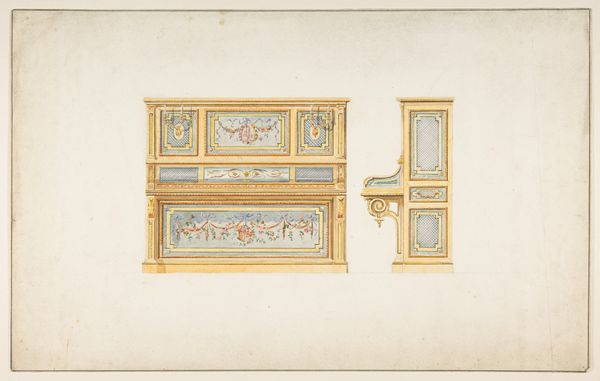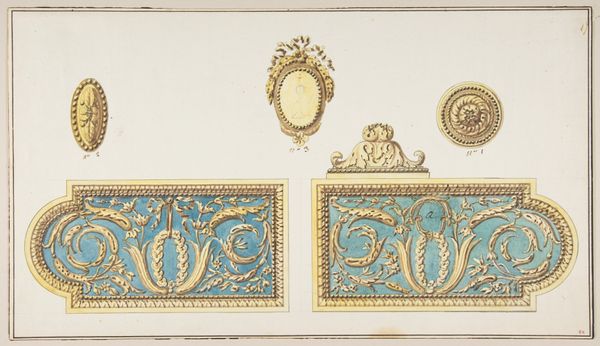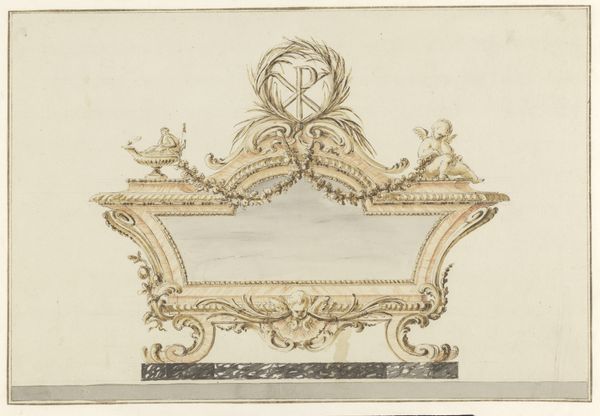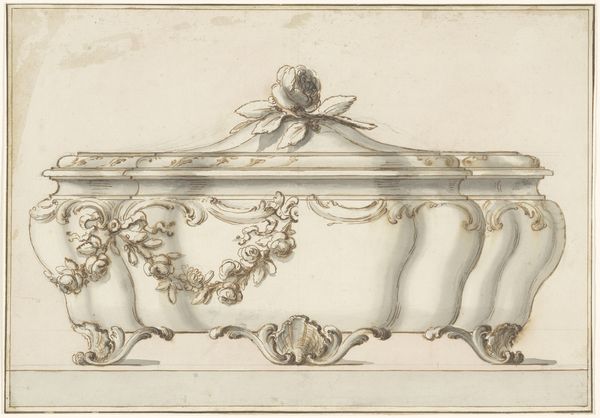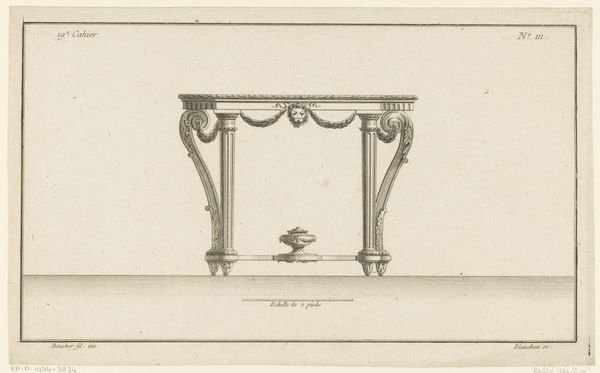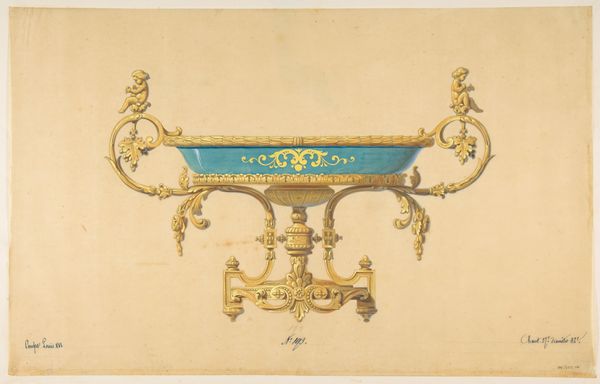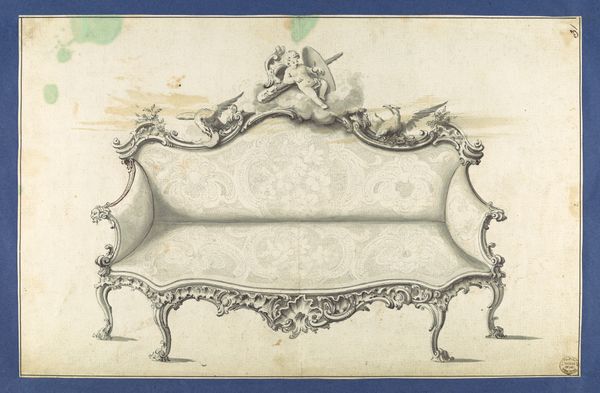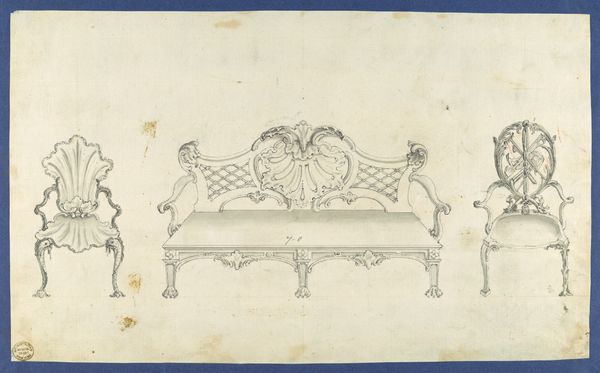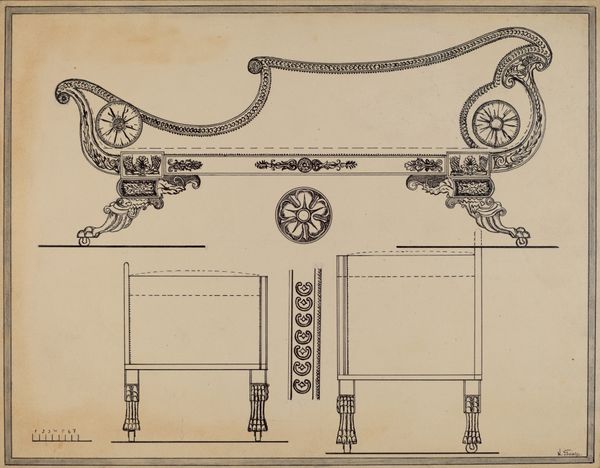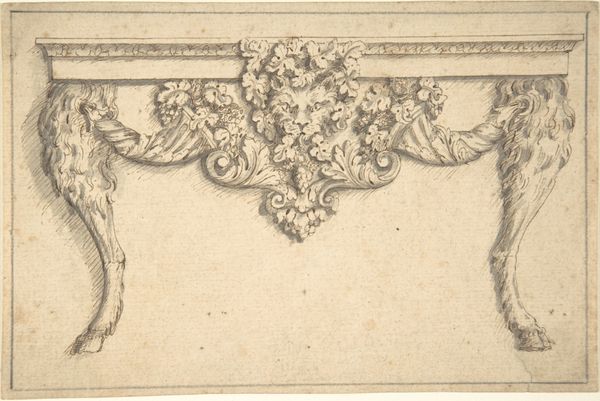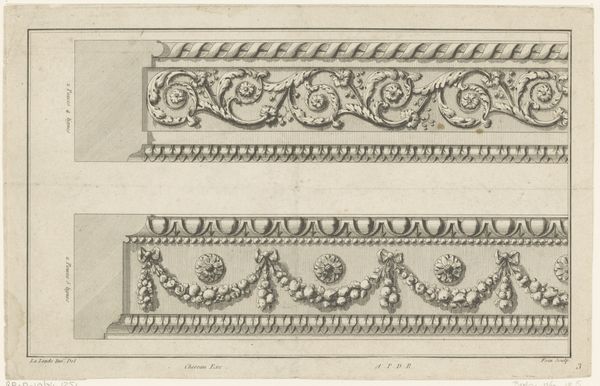
drawing, ornament, print, watercolor
#
drawing
#
ornament
#
water colours
# print
#
watercolor
#
stoneware
#
decorative-art
Dimensions: sheet: 18 7/16 x 5 1/2 in. (46.8 x 13.9 cm)
Copyright: Public Domain
Editor: This is an "Ornament Design," a watercolor and print from the 19th century, author is anonymous. It's currently at the Metropolitan Museum of Art. The level of detail and symmetry feels very formal, almost intimidating. What are your initial thoughts when you look at this piece? Curator: This reminds me of the visual language that wealthy people used during the 19th century. Ornamentation served as a powerful tool, communicating status and solidifying social hierarchies. This is design not merely as decoration but as a declaration. What do you notice about its display here? Is it presented neutrally? Editor: Well, displaying it in the Met definitely gives it prestige, right? I mean, it’s framed as art, but it’s also clearly meant to be functional decoration. Curator: Exactly. Museums actively shape how we view art. The Met's acquisition and presentation elevate this "ornament" from mere craft to an object worthy of study and admiration, a silent commentary on the power of institutions. Where else might this kind of ornament appear, and who would encounter it? Editor: Maybe in a grand house? Like part of a dining set, and viewed by wealthy families and their guests? So, showing it here frames it as an aesthetic object, maybe divorcing it from that original social context a little? Curator: Precisely. And that raises an interesting point about accessibility and interpretation. Displaying such items removes some context. It prompts questions about who gets to access this cultural heritage and whose stories are being told. Is it empowering or does it reinforce the status quo by memorializing objects of privilege? Editor: I never thought about decorative art having so much political meaning. I just saw it as…pretty! Curator: That’s a natural first reaction. But art, even "decorative" art, always operates within social structures. Consider the original consumer—what values were they hoping to display alongside this object? Editor: It really makes you wonder about the lives connected to this object back then, and now its life in a museum shaping today's perspectives too. Thanks for untangling all that.
Comments
No comments
Be the first to comment and join the conversation on the ultimate creative platform.
